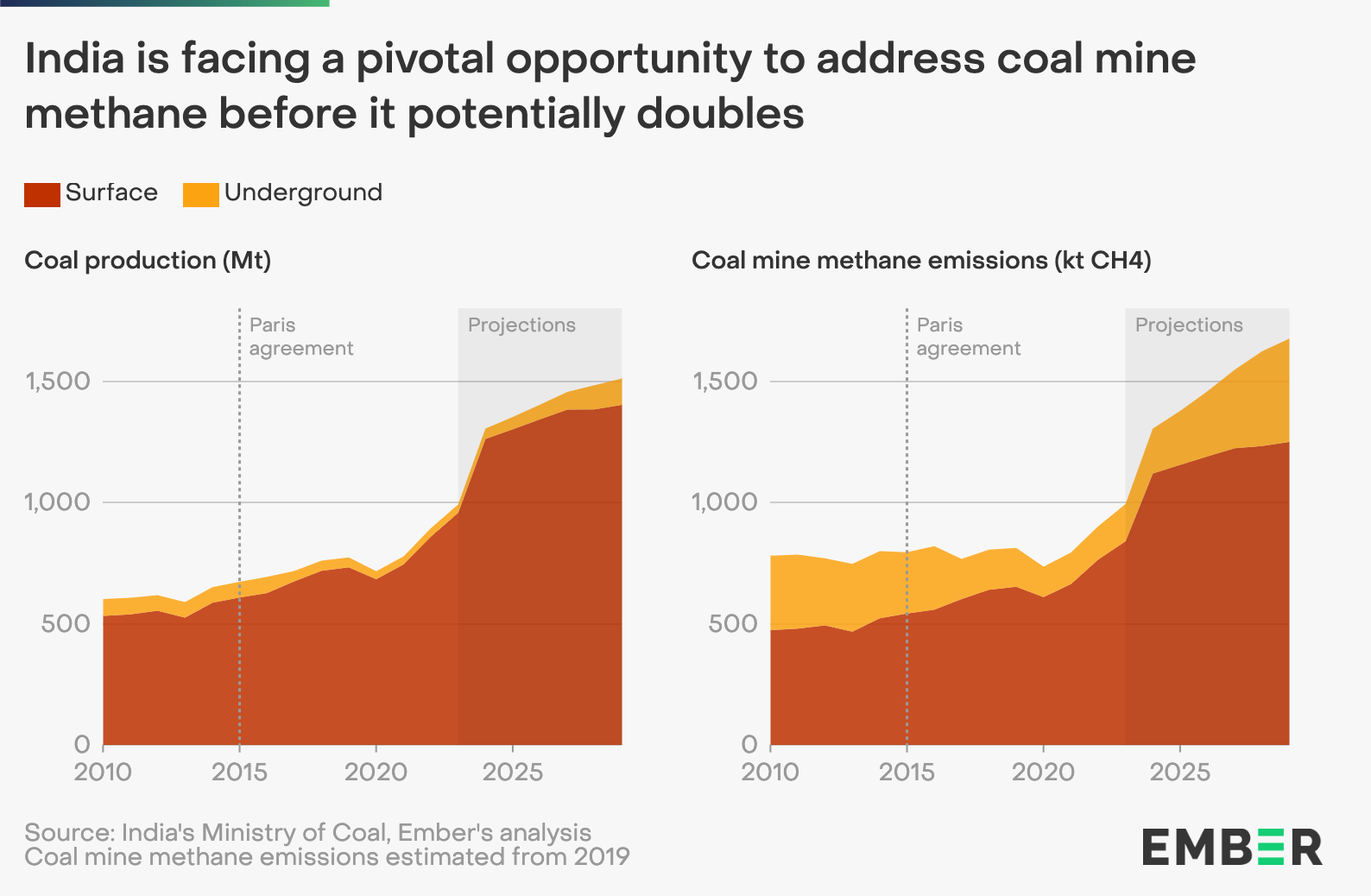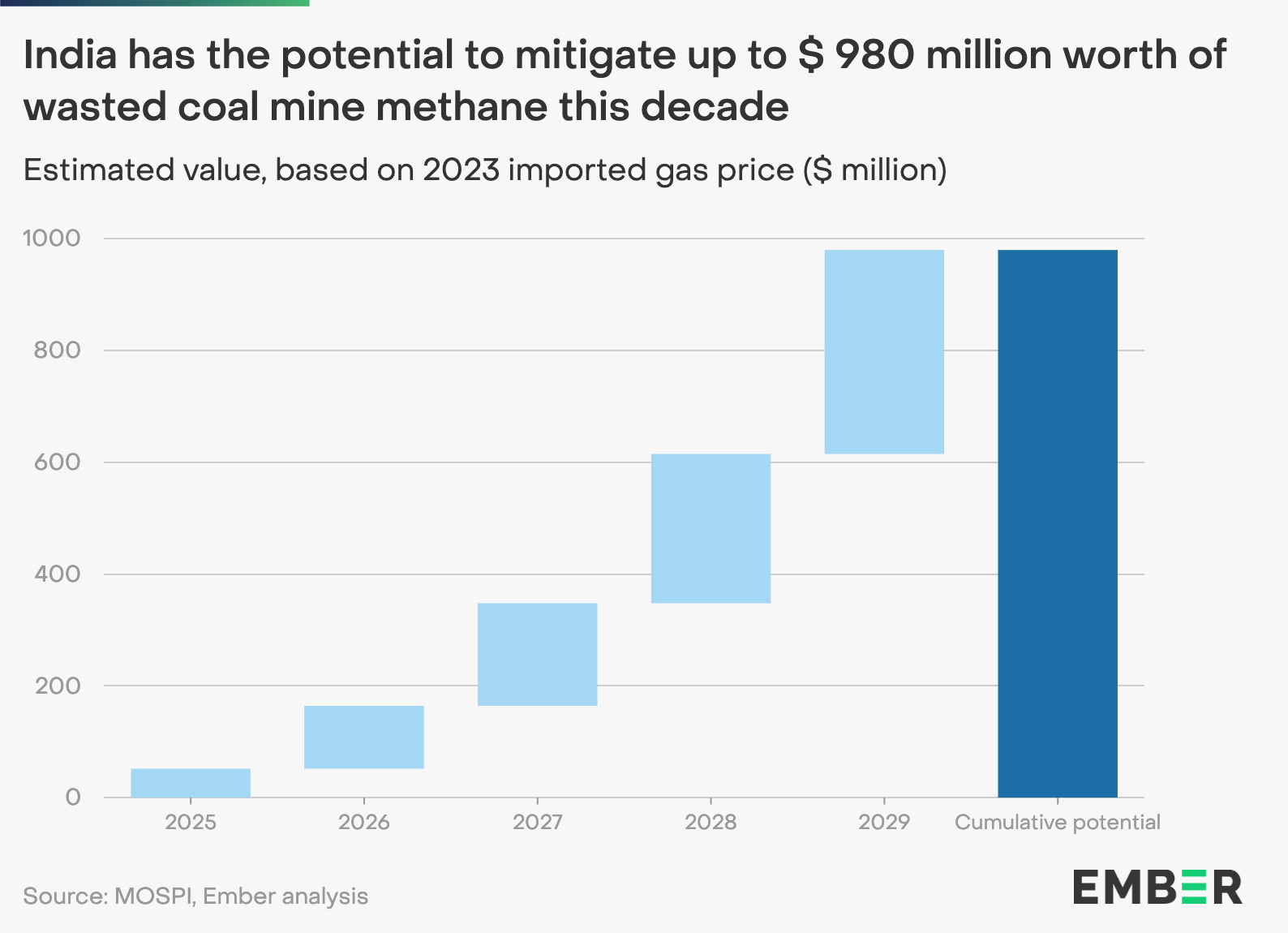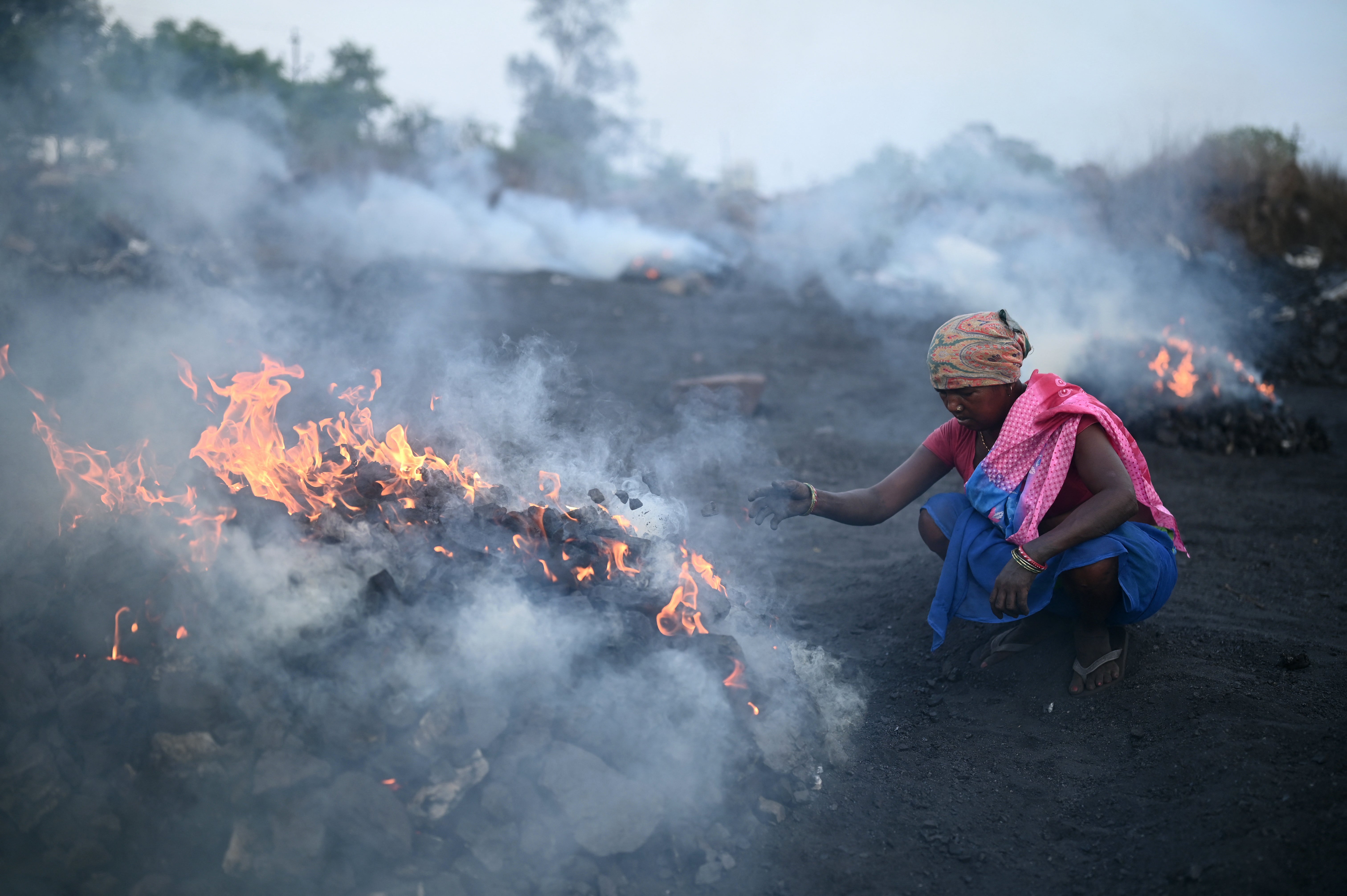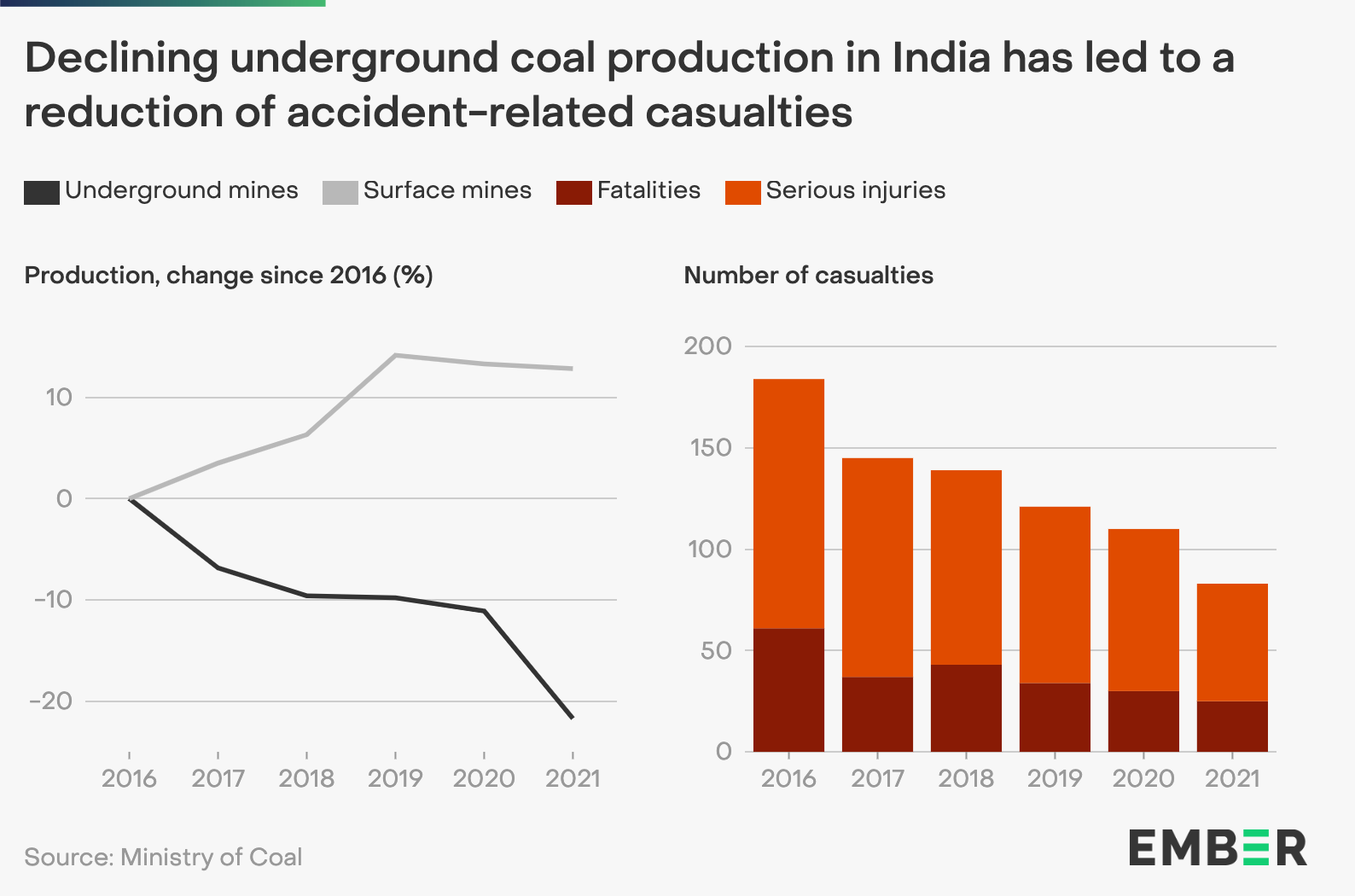A new study warns that methane emissions from coal mining in India could more than double by the end of the century, urging urgent measures that could also reduce reliance on imported gas.
Methane emissions from Indian coal mines are projected to exceed 1.6 million tonnes per year by 2029, more than double the 2019 record, according to a report released on Thursday by global energy think tank Ember.
Methane is a potent greenhouse gas, capable of trapping more than 80 times more heat than carbon dioxide in the short term, and is a major contributor to the climate crisis.
India plans to increase coal production to meet growing energy demand as electricity consumption outpaces the growth of renewable energy.
Solar and wind are projected to drive two-thirds of India’s electricity growth through 2032, according to Ember, but the country is also pushing ahead with the expansion of coal mining, including tripling underground mining.
Underground mines are a major source of methane emissions, with the gas leaking from ventilation systems, cracks and open pits during mining.
The planned expansion could lead to a spike in emissions, but if mitigated, it could create economic opportunities for India, according to the report.
embers analysis With the right technologies in place, India could cut annual methane emissions from coal mines by up to 35% by 2030. It could also reduce its reliance on expensive imported gas, saving more than $1 billion (£756 million) a year by 2029.

Technologies such as pre-mining dewatering, which extracts methane from coal seams before mining begins, ventilation air methane oxidation, which captures methane from mine ventilation systems, and flaring, which burns methane to turn it into less harmful carbon dioxide, can help capture methane and convert it into a useful energy source, Ember said.
The captured methane can be used to generate energy, replacing the approximately 1.5 billion cubic metres of natural gas that India currently imports to meet its energy needs.
“Gas is gas. Methane coming out of coal mines can be actively captured in the tunnels and underground mine vents. From there it’s just a matter of figuring out how to best use that gas,” said Chris Wright, Ember’s climate strategy adviser on coal mine methane..
The move could deliver significant savings of up to $980 million (£741 million) over the next five years, as it offsets the need to buy gas from abroad and converts waste methane into a domestically usable energy resource, the report estimates.

“This is a quick opportunity to slow climate change, reduce the ground-level ozone layer and complement carbon dioxide reduction efforts,” said Rajasekhar Modadugu, India climate and energy analyst at Ember. He said policies are needed to encourage the capture and use of methane before it is released into the atmosphere.
India is the world’s third largest emitter of methane. Much of this comes from livestock, but coal mining is becoming an increasingly significant source. Despite this, the Indian government has yet to sign any international agreements such as the Global Methane Pledge, which aims to reduce methane emissions by 30 percent by 2030.

“With India’s coal production targets set to increase by 2030, capturing and utilizing methane emissions from both active and abandoned coal mines is crucial. The technology and international assistance needed for India to take immediate action is available,” said Felicia Lewis, Director of International Methane Partnerships and Outreach at the Clean Air Task Force. Independent.
The Ember report noted that mitigating methane emissions would also address safety concerns for coal miners, as methane explosions in underground mines pose a significant risk.
Methane-related incidents have accounted for more than half of India’s coal miner fatalities since 1980. Capturing methane could help India improve mine worker safety.

As India continues to expand coal mining, experts warn the country is at risk.
“Methane is like an electric blanket for the climate and also causes ground-level ozone pollution. Reducing methane is one of the best ways to prevent further warming over the next decade and at the same time reduce air pollution,” Wright said. Independent.
Despite global pledges, methane emissions are growing at the fastest rate in recorded history, according to a recent report from the Global Carbon Project, which warns that without reducing these emissions, it will be nearly impossible for the world to meet its climate goals.
Independent is Climate 100 list launched We will be holding an online event in New York on September 25th.







